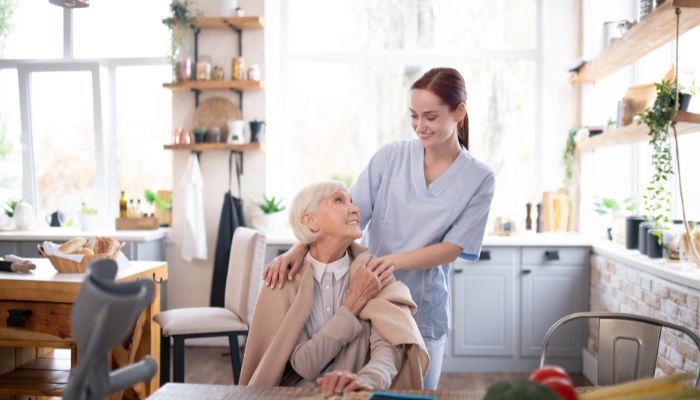Preparing the home for a caregiver’s arrival is paramount to a smooth transition as families navigate the complex path of arranging care for loved ones. The presence of a professional caregiver requires thoughtful consideration of practicalities and subtleties to ensure comfort. Whether you are personally providing care, sharing responsibilities with others, or overseeing caregiving from a distance, we’ll provide actionable steps to create a safe and welcoming environment for all.
Evaluating the Living Space
One of the first things people think of when getting their loved one’s home ready for a caregiver is the living space. Here are a few areas to focus on.
Safety First
Before anything else, assess the safety of the home. Remove any hazards that might lead to trips and falls, such as rugs, and ensure all areas frequented by the caregiver and your loved one are easily navigable. This is especially important if the patient uses mobility aids.
Accessibility
Consider the ease of access within the home. Are commonly used items within reach? Can you make adjustments to make the bathroom safer, such as installing grab bars or a shower chair? You may need to think about switching to a hospital bed in the home for easier mobility. Perhaps you’ll change the design of the first floor to make space for a bedroom instead of an office.
Privacy Matters
Your loved one’s comfort extends to their sense of privacy. Set clear boundaries for spaces that are private, and ensure the caregiver can take breaks in spaces that don’t intrude on those boundaries.
Creating a Nurturing Environment
The next focus point is building a caring environment. The more comforting the space, the better.
Personalizing the Space
A home caregiver does more than address physical needs; their presence can also nurture emotional well-being. Encourage personalization of the space by your loved one to foster a sense of ownership and comfort. Help them by layering in elements of things they enjoy—their favorite pillows, blankets, artwork, and entertainment like music and books.
Building Trust
Emphasize the importance of building a rapport between the caregiver and your loved one. Trust and understanding are the cornerstones of successful caregiving. Initially, you may want to be more present for most encounters to act as a buffer and help the caregiver ease into the relationship.
Preparing for Professional Care
Another tip for getting your loved one’s home ready for a caregiver has to do with all things medical.
Professional Requirements
The home should have all the necessary medical equipment and supplies so the caregiver can perform their duties. This might include medications, first aid supplies, and PPE. The caregiver should supply you with a list of items they’ll need as well as the items they’ll bring.
Creating Systems
Develop systems that make daily routines easier, such as medication dispensers, clearly labeled instructions, and organized paperwork. It might seem redundant, but it’ll make a great difference.
Handle the transition to a caregiver living in the home with careful planning, open communication, and a commitment to providing the best care to your loved one.
































